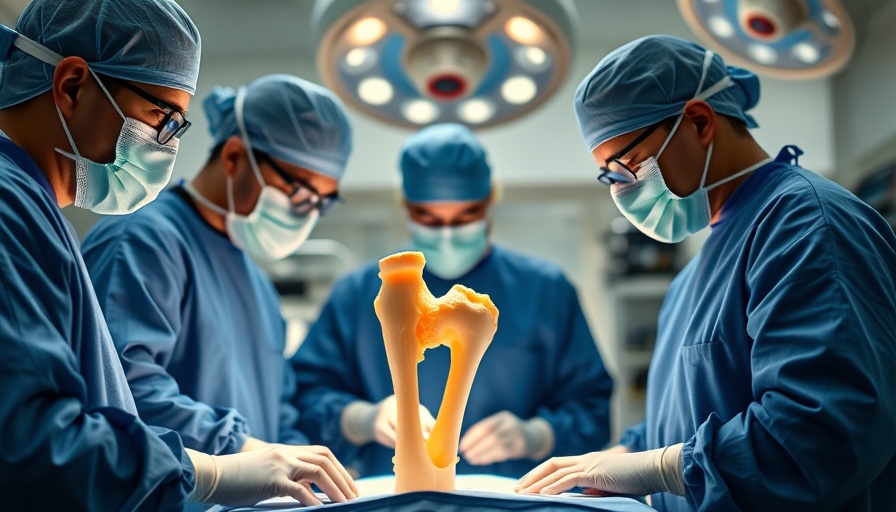
Vietnam's medical breakthrough reshapes pediatric treatment
Imagine facing a life or death decision for your child. That's the reality a Vietnamese mother confronted when her eight-year-old son was diagnosed with malignant bone cancer. Following intense chemotherapy, doctors advised amputation as the only option to save her son's life. But this story jumps past despair into hope. Thanks to a trailblazing procedure at Vinmec Times City International Hospital, the boy received a fully customized 3D-printed titanium femur instead of a life-altering amputation.
The world's first 3D-printed femur transplant: a closer look
This groundbreaking surgery is remarkable for several reasons. It is not just about cutting-edge technology; it represents how medical innovation can merge with the emotional and psychological aspects of patient care. This is the world's first documented instance where a child received a 3D-printed femoral implant tailored specifically for their growth needs. Typically, pediatric patients undergoing such drastic procedures face traditional titanium implants that can lead to multiple surgeries as they grow. However, this tailor-made implant adjusts with the patient's development.
Vinmec's commitment to innovation
A partnership with VinUni's Biomedical 3D Lab brought this revolutionary implant from concept to reality. The modular design ensures that as the child matures, the implant will accommodate changes in size, thus reducing the need for future surgeries. Dr. Tran Duc Thanh, who was pivotal in executing the surgery, said, "Manufacturing our equipment allows us to be proactive. It sets a new direction for healthcare in Vietnam." This attitude echoes throughout the institution, championing not only technological advancements but the holistic approach to patient care.
Transforming challenges into triumphs in healthcare
Vietnam's increasing engagement in 3D printing for healthcare isn’t just a passing trend. The Asia-Pacific market for this technology is projected to jump from around USD 1.04 billion in 2025 to over USD 6.7 billion by 2035, according to Metatech Insights. As hospitals focus on creating self-reliant systems offering personalized treatment, breakthroughs like this one are foundational. It's not merely a localized victory; it suggests Vietnam could become a leader in the Southeast Asian healthcare landscape.
Emotional journeys redefine hope
Every innovation has a human side. In this case, that side is embodied in the boy and his courageous mother who refused to accept a bleak fate. The mother's determination sparked one of the most significant surgical advancements in Vietnamese healthcare. For the boy, the custom implant meant avoiding amputation and retaining his childhood joys—things like running and playing. The emotional landscape surrounding modern treatments cannot be understated. As healthcare continues to evolve, the emotional narratives intertwined with these advancements become as important as the technologies themselves.
Looking ahead: the future of medical innovation in pediatric care
This procedure serves as an encouraging glimpse into the future. With innovations like the 3D-printed femur gaining momentum, we might witness a shift in treatment paradigms for pediatric patients worldwide. Imagine a future where patients can receive tailor-made solutions that adapt to their growth. Innovation becomes more than just a buzzword; it can be a lifeline.
The power of compassionate care
This story isn't solely about medical advancements; it's also about the compassion that fuels them. Patients deserve more than mere life— they deserve dignity and the ability to live openly and freely. The success of Vinmec’s surgery reflects a shift where innovation aligns closely with patient-centered care. Understanding this emotional fabric helps define success beyond the operating table. For children facing health challenges, innovations like these can restore not only their health but their sense of normalcy.
A step forward in precision medicine
Vietnam's foray into producing growth-adaptive implants showcases a significant leap toward precision medicine. This isn’t just medical engineering; it's about reshaping lives, one child at a time. As healthcare leaders look to the future, they can glean insights from Vietnam's rapid advancements. The journey of this young boy is a powerful reminder that with innovation, compassion, and determination, significant changes are possible in the fields of medicine and life.
 Add Row
Add Row  Add
Add 




Write A Comment